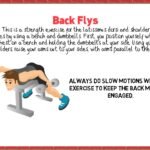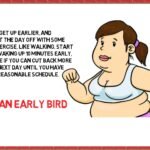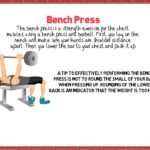Home Fitness Realm
[caption id="attachment_1742" align="alignleft" width="300"] Get Your Trophy![/caption]
Get Your Trophy![/caption]
My Blog, Your Health.
Some moderate exercises that can help improve your overall fitness leve
Here are some moderate exercises that can help improve your overall fitness level:
1. Brisk walking: Take a 30-minute walk at a moderate pace. This is a great way to get your heart rate up and improve your cardiovascular health.
2. Cycling: Go for a leisurely bike ride around your neighborhood or on a bike path. Cycling is a low-impact exercise that can help build strength in your legs and improve your endurance.
3. Swimming: Take a dip in the pool and swim a few laps. Swimming is a full-body workout that can help improve your cardiovascular fitness and strengthen your muscles.
4. Yoga: Practice some gentle yoga poses to improve flexibility, balance, and strength. Yoga also promotes relaxation and stress relief, making it a great addition to your fitness routine.
5. Pilates: Try a Pilates class or follow a Pilates workout video. Pilates focuses on core strength, flexibility, and postural alignment, making it a great way to improve your overall fitness level.
6. Body weight exercises: Perform exercises like squats, lunges, push-ups, and planks using just your body weight. These exercises help build strength and improve muscle tone.
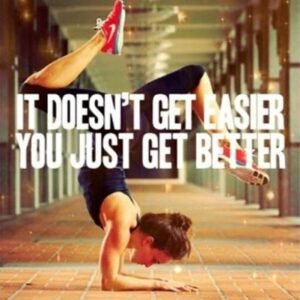
Remember to listen to your body and consult with a fitness professional before starting any new exercise routine. Enjoy your workout and have fun getting fit!
Short Workouts Get Results!

Short workouts are a great way to get results because they are efficient and easily fit into a busy schedule. By focusing on high-intensity exercises, short workouts can help increase your heart rate, burn calories, and build strength in a shorter amount of time.
The key to getting results from short workouts is to make sure they are targeted and intense. Incorporating a mix of strength training and cardio exercises can help you maximize your time and see improvements in your fitness level. Additionally, adding in intervals or circuits can help keep the intensity high and ensure you are pushing yourself during the workout.
Consistency is also key when it comes to short workouts. Aim to do them regularly, whether it’s daily or a few times a week, to see the best results. Remember to listen to your body and adjust the intensity and duration of your workouts as needed to avoid overtraining and injury.
Overall, short workouts can be an effective way to achieve your fitness goals, whether it’s improving your strength, endurance, or overall fitness level. So don’t underestimate the power of short, focused workouts – they can help you get results!
10 Things You Should Know About Stretching!
![]() 10 Things You Should Know About Stretching!
10 Things You Should Know About Stretching!
Before fitness training, one must give importance to doing warm-up or stretching exercises to prevent accidents or to enhance the output during the training. There are also precautionary measures and tips to serve as guidelines when doing fitness exercises. Here are some of them.
- To increase your flexibility and avoid injuries, stretch before and after a workout. Almost everyone knows that stretching before a workout prevents injuries during the exercises, but only few people know that stretching after a workout, when muscles are still warm, can increase flexibility.
- Hold your stretching position for more than 60 seconds to increase flexibility. While holding your position for 20 seconds is enough for warm-ups, holding each position for at least 60 seconds will develop the body’s flexibility.
- Do not go into a stretching position then immediately return to the relaxed position, and do it repeatedly. This is more appropriately termed as bouncing while in a position. When stretching, hold that position for several seconds, and then slowly relax. You may do this exercise repeatedly this way. Bouncing or forcing yourself into a position during stretching can strain or damage some joints or muscles.
- Work slowly in increments instead of immediately proceeding to doing the hardest exercise or position.
- Make sure that you have stretched or warmed up all muscle groups. For some people, even if they have strong bodies, they tend to neglect the neck when working out of stretching. Stretching the neck muscles can be as simple as placing the palm of one’s hand against the front of the head and pushing it. Then, do the same to the sides and the back of the head.
- Stretch regularly to continually increase your range of movements and your level of flexibility and strength.
- Workout considering only your capabilities and not of others. Do not force yourself to do exercises that you are not yet capable of just because there are people who can do it. Increase your limits slowly. Listen to your body. There are days when your body may be too tired that you may have to consider reducing your range of motion.
- Learn to rest. Rest in between sets and stations to make sure that the body has enough time to recover its energy. Also, it is advisable that you don’t work the same muscle groups consecutively for two days. The muscles grow during the period when you rest and not when you are working out.

- Do aerobic exercises to strengthen your heart. Aerobic exercises are those physical activities that much oxygen for fuel. This includes cardiovascular exercises such as skipping rope, running or swimming.
- Stretching is a crucial aspect of any fitness routine, but maximizing its benefits requires a deep understanding of proper techniques and methods. To transform your pre-written data on stretching into a masterpiece, consider delving into the science behind different types of stretches and their specific benefits. Detail the importance of dynamic stretching before a workout and static stretching afterward, emphasizing the role of each in preventing injury and improving flexibility. Explore the concept of proprioceptive neuromuscular facilitation (PNF) stretching and its effectiveness in increasing range of motion. Additionally, discuss the significance of breathwork and mindfulness during stretching exercises to enhance mind-body connection and amplify results. By incorporating these advanced concepts into your content, you can offer readers a comprehensive guide to optimizing their stretching routines and achieving their fitness goals more effectively.
Better Work Out

Fitness Q
Feeling overwhelmed by conflicting fitness advice and lacking motivation to prioritize your health?
Discover AboutWorkout.com, your go-to source for science-backed fitness information and lifestyle guidance.
Transform your approach to exercise and well-being with easy-to-follow tips and expert advice.
Empower yourself to make informed decisions that enhance your health and fitness journey for a lifetime.
Better Work Out
1.Stop and Go
If you play a sport that requires a full sprint, remember that a full sprint strains the muscles of the lower body. To combat this, do stop-and-go exercises. For example, run 30 meters at about 80 percent of your effort, slow to a jog for five to 10 meters, then run again for another 30 meters. Repeat this process five times.
2.On bended knees
Almost 3 out of four ACL injury occurs when players are landing or turning. If your knees are bent instead of straight, the risk of injury is greatly reduced according to a report in the JAAOS (Journal of the American Academy of Orthopedic Surgeons).
3.Cool down.
Heatstroke is not something that can be easily cured like headache. To avoid it, stay cool and hydrated. Be sure the combined temp and humidity is less than 160. This is according to Dr. Dave Janda of the IPSM.
4.Get the proper equipment.
Badly fitting gears or ill sized equipment can be a cause of training injuries. The extra money spent on proper equipment goes a long way.
5.Do it the right way.
Bad technique is just as bad as, well, bad equipment. Seek advice from pros and trainer, this advice are invaluable to your exercises or training.
6.Go West. (or whichever direction)
If you’re playing or training in multiple directions, your warm-up should also. Move sideways, backward, forward and all the motions you might be doing. This allows your body to be prepared.
7.Have yourself filmed.
The camera doesn’t lie. Show your video to a person well verse in your training, so he can give a critic of your fitness regimen.
8.Loosen the shoulders.
Even a slightly injured rotator cuff can shut down the function of a shoulder. You might want to include stretching to protect your rotator cuffs.
9.Take An early dip
Schedule your swimming sessions early. The fewer people in the pool means less of everything in the pool.
- Protect yourself.
Wearing custom-fitted mouth guards reduces the risk of injuries by as much as 82 percent, according to a study at UNC at Chapel Hill. Plunk out the cash for a custom-fitted mouth guard, and it’ll last for years, including your smile and teeth.
- Smooth out your tendon.
Inquire about ultrasound needle therapy. This procedure is minimally by using ultrasound to guide a needle. The needle smoothens the bone, breaks up calcifications, and fixes scar tissue. Thirteen out of twenty patients saw improvement, and the session takes only about 15 minutes of your time.
- Buy your running shoes after work.
Shop in the evening, the feet are swollen after a day of work. It approximates how your feet will be after three miles of running.
- Do off-road running.
If the surface is unstable, it trains the ankles to be stable.
- Know where you’re going.
Whether it’s biking, or skiing, be sure to have a dry run down any path first. A lot of injuries can be avoided when you’re familiar with the route taken.
- Train hard.
Anxiety reduces your peripheral vision by three degrees and slows the reaction time by almost 120 milliseconds, according to an article of the Journal of Sports Sciences. When the going gets difficult, the veteran athlete relies on skills they’ve trained for and practiced. It keeps them cooler under pressure, widening their vision so they can see react much faster.
Lifetime Fitness: On Your Way to a Healthier You
Here are some tips to help you on your journey to a healthier you:
1. Eat a balanced diet: Make sure to include a variety of fruits, vegetables, whole grains, and lean proteins in your meals.
2. Stay hydrated: Drink plenty of water throughout the day to keep your body functioning properly.
3. Exercise regularly: Aim for at least 30 minutes of physical activity most days of the week. Find activities you enjoy, making it easier to stick with.
4. Get enough sleep: Aim for 7-9 hours of quality sleep each night to allow your body to rest and recover.
5. Manage stress: Practice relaxation techniques such as deep breathing, meditation, or yoga to help reduce stress levels.
Ways to Lose Belly Fat
Ways to Lose Belly Fat
Have you heard about the stress-fat connection?
- Quick Tips
Do you know how and why anxiety and tension triggers us to pile on the pounds? If you’re gathering ways to lose belly fat, learning stress management is a vital technique.
Stress stimulates the fight or flight response, which is the brain’s red flag to take action in emergency situations. When your brain senses a threat, it signals your adrenal glands to push out the stress hormone, cortisol. The stress hormone prompts fat cells to make quick energy available.
Extra energy serves as a power surge your muscles can use to either stay and fight, or flee from danger. This mechanism worked beautifully in the eras when man faced physical danger from wild animals, etc. However, it can’t discern what causes modern day stress, such as financial or marital problems. It keeps on cranking out cortisol, which we don’t use, and the body stores it as fat.
Studies have shown the mechanism influences where the excess flab is stored. Particularly in women, it is stored as deep abdominal flab – the dangerous kind of fat – which increases risks of heart disease and stroke.
Your first thought is likely to start a serious calorie-restricting diet. Let’s correct this old way of thinking. Again, according to clinical studies, incorrect dieting increases stress and cortisol levels.
So, what are right ways to lose belly fat?
Avoiding simple sugar and Trans fats is a good place to start breaking the stress-fat cycle. Both these culprits tend to pile fat on your belly. Read food labels because manufacturers can be sneaky.
If you are “starving” your sweet tooth, make a fruit smoothie. Sweeten it with a little honey or molasses if you must add sugar.
Make your diet as natural and unprocessed as possible. Don’t add extra stress by eating a lot of stuff you don’t like. There are plenty of healthy foods to choose from.
Also, don’t starve yourself. “Dieting” does not work, and it can make you very sick. Severe calorie restriction destroys protein and lean muscle.
Don’t force yourself to eliminate something you really like. Once you start eating a clean diet, it will gradually eliminate itself.
Get your necessary fats from monounsaturated fatty acids such as, seeds, nuts, olive oil, soybeans and avocados.
Eat your fill of fresh fruits and veggies. Get at least three of each every day. Buy organic if possible. Eat your dark, leafy greens, such as mustard, spinach and collards.
Try to consume fewer animal products – yes this includes meat. Start with a “meatless meal” one night a week. Have fatty fish, such as salmon or tuna twice a week.
If you couldn’t care less about meat, consider a vegetarian way of life.
Drink more water than anything else. Water helps flush out fat.
Sleep is a component you may not have considered. If you do not get quality sleep on a regular basis, your cortisol levels rise and fat accumulates on your belly.
In general, sleep-deprived people test higher in ghrelin, which is the hunger-stimulating hormone. They also test lower in leptins, the fullness hormone.
As for exercise, do some and then do a little more. Clinical research suggests that aerobic exercises are one of the best ways to lose belly fat. You will undoubtedly exercise more if you enjoy it. For example, do you love to dance? Have you always wanted to take a kickboxing class? Does your local YMCA offer water aerobics?
Finally, don’t try to turn your lifestyle upside-down overnight. We’ve shown you ways to lose belly fat. Each time you implement one change, you’re investing in a happier, healthier life.
Moderate Exercises to Fitness!
Moderate Exercises to Fitness!
Have you ever felt tired and stressed out from work and by the time you get home you see your three children running towards you asking you to play basketball with them? You refused and promised them that you would after you take your rest.
Instead of disappointing your children, why not say, “yes” after all? You will be surprised by the amount of energy you will have after that 30-minute activity.
 Did you know that by exercising at a moderate pace for only 30 minutes, you would feel a lot better, mentally? It has been proven that this improves the appetite and sharpens your style in problem solving. Not only that. You will also feel that it is easier to sleep at night if you do moderate exercises even for only 30 minutes every day.
Did you know that by exercising at a moderate pace for only 30 minutes, you would feel a lot better, mentally? It has been proven that this improves the appetite and sharpens your style in problem solving. Not only that. You will also feel that it is easier to sleep at night if you do moderate exercises even for only 30 minutes every day.
What are the benefits of regular exercise? It promotes self-discipline and has a positive impact how you perceive life. Exercise helps in lifting your spirits and getting you out of any depression. For first timers, it can be done for 15 minutes for 2 to 3 days a week. You can increase the time you spend once your body gets tuned up for it.
DON’T you ever force your body! If you get hurt, then stop. You can take a break from exercising for a few days and then you can start again but you need to start from day 1.
Here are some moderate exercises you can do and enjoy:
- Do the Walking. Make use of your surroundings. You can walk your dog, with your partner or child. Encourage your family to do the walking exercise daily and you will find yourself burning calories while enjoying the surroundings and getting enough sunlight that is also good for your body.
- Discover the wonders of Yoga. Yoga is one effective exercise that energizes not only your body but also your soul. You may want to learn even the basic yoga positions that are not too complicated but proven effective. A five-minute yoga exercise can perk you up and recharge your body with the energy you lost for the whole day. You relax and at the same time you stretch!
- Engage yourself into sports. Play basketball, football, baseball, tennis or badminton. Many doctors have recommended sports as an effective way to stay fit and healthy. Sports can also be done in moderation. Do not take it seriously. Shooting basketball with a friend is one moderate exercise that is also considered a sport.
- Join exercise programs at work. If you still do not have exercises programs at work, then why not start it? You can talk to your boss about it and start with your colleagues. You do not only lose calories but it is also one good way to bond with them. This can be done 30 minutes, 3 times a week.
- Exercise while doing household chores. Gardening, raking leaves, lawn mowing, doing the laundry, vacuuming and car washing are effective moderate exercises at home. Make use of these chores to sweat and burn calories. Instead of using machines and gadgets to perform these chores, why not do it with your hands and lose some fats?
Making exercises as part of your daily routines will surprise you of how much calories you will lose. Doing these moderate exercises of the same amount every day can burn 150 calories up to 1,000 calories a day!
Things to Consider When Buying Home Fitness Equipment.
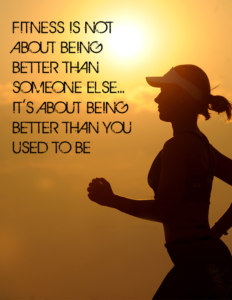
Fitness Today
Things to Consider When Buying Home Fitness Equipment.
A hundred lots of home fitness equipment nowadays are sold in the market. Do not make the mistake of buying something and regretting why you bought it after a day or two. Home fitness types of equipment vary, and you should always have one good reason to buy it. Don’t believe everything commercials tell you about the equipment. Some equipment may seem easy to use on television, but in fact, will not work for you. Try to ask yourself first of these questions before you grab your wallet and buy that equipment.
Do you need it? The equipment should suit your interests and needs. The activities that you will do with that equipment should be challenging and something to enjoy on. Buying equipment is never a guarantee that you will use it, especially if it is something new that makes it harder to use. Make sure that you already know the equipment and that it is something that you already tried in a fitness club. Start from buying small equipments that are aligned to your interests.
Can you afford it? Don’t be fooled with the thought that you will be forced to use something because you spent too much money for it. Expensive equipments are never an assurance that you will use them or that they are effective for you. Always consider how much are you willing to pay for certain equipment. Also ask yourself if it is worth it. Always check on the quality before you buy equipment. The price may be too low but consider that the quality can also be low. Or it may be expensive, but then the quality is not that good. You can try choosing on cheaper alternatives but not sacrificing the quality of the equipment.
You may also want to check out for some used equipments. Most of the time, this is where you find a better deal. You can even find equipments that do not seem to have been used at a very low rate. Or you can find the equipment 3 months old, but the price is almost half the original.
Do you have enough space for it? This is often what buyers forget to consider. Try to consider first where to place a treadmill before buying it. Before you buy something, make sure you know where you will place it. Your place may not accommodate the equipment. Plan ahead and make sure that the equipment can be placed in your home without causing any hassle.
Is it safe for you? If you have existing conditions, be sure to check with your doctor to make sure that the equipment will be safe for you. Some equipment may be painful to use and might cause harm to your body. So make sure to try it first be fore you buy it.
It also suggested that you first consider if a gym near you already has that equipment. You can save money by just registering to that gym and use that equipment compared the price you will spend if you will buy that product.
Buying fitness equipments should be bought with consideration. Do not buy by impulse. Always ask the opinion of a professional gym instructor before you buy something.



